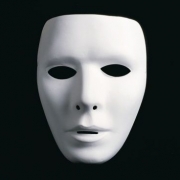- Posts: 5242
Religiousness displayed on a map of the world
It's a map that displays how religious each country is, with some other statistics thrown in there.
http://www.telegraph.co.uk/news/worldnews/11530382/Mapped-These-are-the-worlds-most-religious-countries.html
It won't let me have a blank signature ...
Please Log in to join the conversation.
- Cyan Sarden
-

- Offline
- Banned
-

- Posts: 1218
Edan wrote: I found this interesting today...
It's a map that displays how religious each country is, with some other statistics thrown in there.
http://www.telegraph.co.uk/news/worldnews/11530382/Mapped-These-are-the-worlds-most-religious-countries.html
Not surprised about China (with religion being frowned upon by the communist party and people unlikely to freely talk about it to the press), but Japan? I had the feeling that religion was omnipresent, much more visible than in Western Europe when I last visited. But looks seem to be deceiving.
Do not look for happiness outside yourself. The awakened seek happiness inside.
Please Log in to join the conversation.
Cyan Sarden wrote:
Edan wrote: I found this interesting today...
It's a map that displays how religious each country is, with some other statistics thrown in there.
http://www.telegraph.co.uk/news/worldnews/11530382/Mapped-These-are-the-worlds-most-religious-countries.html
Not surprised about China (with religion being frowned upon by the communist party and people unlikely to freely talk about it to the press), but Japan? I had the feeling that religion was omnipresent, much more visible than in Western Europe when I last visited. But looks seem to be deceiving.
In a way, you were correct. Religion has become so ubiquitous that they don't consider themselves members of an organized religion. I was able to be part of a student exchange program and I can honestly say that Shinto/Buddhist practices were very much in the background. But once you started noticing things, they started popping up all over the place.
Also note that the map doesn't list percentage of people that participate in religious events, but rather the percent of people who consider themselves religious (which many Japanese don't).
I didn't focus on the religious aspects while I was there, except for the days that were set aside to teach the exchange students about it. And though Wikipedia shouldn't be considered the final authority on the subject, they do have an article about it here
Please Log in to join the conversation.
- Cyan Sarden
-

- Offline
- Banned
-

- Posts: 1218
SMullinax wrote: In a way, you were correct. Religion has become so ubiquitous that they don't consider themselves members of an organized religion. I was able to be part of a student exchange program and I can honestly say that Shinto/Buddhist practices were very much in the background. But once you started noticing things, they started popping up all over the place.
Also note that the map doesn't list percentage of people that participate in religious events, but rather the percent of people who consider themselves religious (which many Japanese don't).
I didn't focus on the religious aspects while I was there, except for the days that were set aside to teach the exchange students about it. And though Wikipedia shouldn't be considered the final authority on the subject, they do have an article about it here
We just had the feeling that religious symbolism, temples etc were pretty much everywhere. It really depends on what the authors of the survey asked the people. Here in Switzerland, a huge number of people belong to one of the two Christian state religions, but most of them don't practice their faith at all. I quit church and then re-joined myself, because I consider this a way of charity. The church does a lot for the local community - it's one of the few organizations that actually does that. So it's a big difference if people were asked whether they're religious or if they just checked with the residents registration office to find out how many people pay church taxes (church membership costs between 500 and 1500$ here per year and is billed through the tax system).
Anyway, the survey's a very interesting read - many westerners believe that everyone east of Russia is a devote Buddhist or Hindu
Do not look for happiness outside yourself. The awakened seek happiness inside.
Please Log in to join the conversation.
- OB1Shinobi
-

- Offline
- Banned
-

- Posts: 4394
if you consider religion to mean "what a person believes is true about life and their place in it" then we all are religious once we start drawing conclusions
People are complicated.
Please Log in to join the conversation.
It won't let me have a blank signature ...
Please Log in to join the conversation.
- OB1Shinobi
-

- Offline
- Banned
-

- Posts: 4394
those archaic, superstitious masses
but at the heart of it
religion is a psychological process of orientation
more than one of any particular intellectual affiliation
this idea seems to bother particular people in all camps
mostly because it puts us all on a level playing field
and ideas of being better or smarter or wiser
i.e. having some superior grasp on "the truth"
are all tossed out the window
People are complicated.
Please Log in to join the conversation.
Convictions are more dangerous foes of truth than lies.
Please Log in to join the conversation.
ren wrote: It's a very, very small survey. It gives a verdict on billions of people by looking at a population of less than a hundred thousand. meaningless data.
Not really, in the UK a study of 1000 people is considered a good enough sample size and that's about 1/70,000 of the population. This study didn't do every country in the world, it only did 65 so it is useful information though good on the Telegraph for not linking to the original survey or including the margin for error *sigh*.
Please Log in to join the conversation.
ren wrote: It's a very, very small survey. It gives a verdict on billions of people by looking at a population of less than a hundred thousand. meaningless data.
I agree with this comment 100%. The data, and the map as presented have serious limitations. We don't know about the sampling bias that was used in the generation of this data. 1000 people sampled in a city is going to give a different result than the same sample in a rural area. Countries are NOT homogenous, but the choropleth map and this data implies that they are indeed so. Here's a counterpoint: Americans are familiar with the "bible belt" and I'm sure there's similar ultra religious / non-religious areas in other countries.
Furthermore, we aren't given values on the color ramp between the lowest and the highest value. Therefore, I can only compare the max and min values. All other colors displayed on this map are meaningless. You might say, well, I can make an ordinal comparison between these countries -- darker is more religious than lighter. OK, but there's still a lot of data that is potentially hidden, because we don't know the values that are members of each class. The ranges within each color group could be enormous. The ranges could be something like 7-50% (lightest shade) 50-60% (middle shade) 90-94% (darkest shade) and there could be huge variation within each of those classes which isn't accounted for on the map unless an individual clicks on a country to find out. Hiding the class breaks and not stating how the class breaks were calculated is just irresponsible use of data. If you think this doesn't matter, using natural breaks is going to look very different from a map using quantiles versus equal interval. Here's an example:
The importance of data classification
Don't bother reading the text unless you want to know in detail how this works. Instead, just look at the 3 maps. They all depict THE SAME DATA but use a different classification scheme (equal interval / natural breaks / quantile / standard deviation). Look how different the map looks, and how the reader will take away a different message from each map.
Please Log in to join the conversation.

